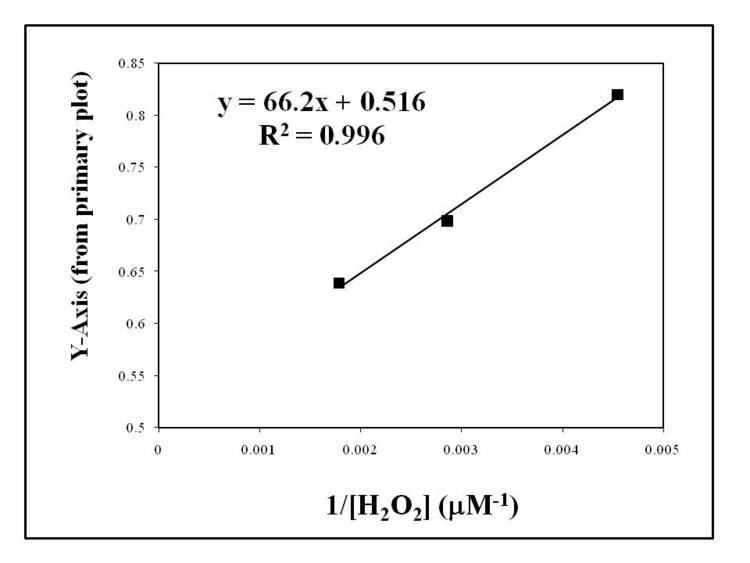 | ||
In enzyme kinetics, a secondary plot uses the intercept or slope from several Lineweaver-Burk plots to find additional kinetic constants.
For example, when a set of v by [S] curves from an enzyme with a ping–pong mechanism (varying substrate A, fixed substrate B) are plotted in a Lineweaver–Burk plot, a set of parallel lines will be produced.
The following Michaelis–Menten equation relates the initial reaction rate v0 to the substrate concentrations [A] and [B]:
The y-intercept of this equation is equal to the following:
The y-intercept is determined at several different fixed concentrations of substrate B (and varying substrate A). The y-intercept values are then plotted versus 1/[B] to determine the Michaelis constant for substrate B,
Secondary Plot in Inhibition Studies
A secondary plot may also be used to find a specific inhbition constant, kI.
For a competitive enzyme inhibitor, the apparent Michaelis constant is equal to the following:
The slope of the Lineweaver-Burk plot is therefore equal to:
If one creates a secondary plot consisting of the slope values from several Lineweaver-Burk plots of varying inhibitor concentration [I], the competitive inhbition constant may be found. The slope of the secondary plot divided by the intercept is equal to 1/kI. This method allows one to find the kI constant, even when the Michaelis constant and vmax values are not known.
